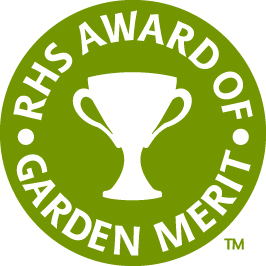Enkianthus campanulatus (Redvein Enkianthus, Furin-Tsutsuji)
Michael's Opinion
A large deciduous shrub that grows best in acidic, moist, organic soil. This plant is very low maintenance with attractive bell shaped flowers held in pendulous racemes and quite intense scarlet autumn foliage. Grows best in woodland areas, avoid dry hot areas. A plant worthy of its past awards and inclusion in the garden.
Botanical Information
| Family | Ericaceae |
| Genus | Enkianthus |
| Species | campanulatus |
| Category | Woody |
| Type | Shrub (deciduous) |
| Origin | Discovered in the mountain regions of Japan in 1870 and introduced into cultivation in 1880 by Charles Maries. E. campanulatus was awarded the Royal Horticultural Society Award of Merit (AM) in 1890 and an Award of Garden Merit (AGM) in 1984. |
| Pronunciation |
Details
| USDA Hardiness Zone | 7b - 8a |
| USDA Hardiness Ref. | |
| Canadian Hardiness Zone | 7b |
| Canada Hardiness Ref. | |
| RHS Hardiness Zone | H5 (Observed growing well in H7 in a protected location) |
| RHS Hardiness Ref. | |
| Temperature (°C) | -15 to -10 |
| Temperature (°F) | 5 - 14 |
| Height | 2.5 - 3 m |
| Spread | 1.5 - 2.5 m |
| Growth | Slow |
| Flowering Period | May, June |
Description and Growing Information
| General Description | Enkianthus campanulatus is a deciduous shrub known for it's attractive, drooping, bell-shaped flowers. |
| ID Characteristic | A fairly slender shrub with erect branching in a layered pattern, alternate leaf arrangement, leaf clusters at branch tips, dark green leaves, light green and red shoots, bell-shaped pale yellow flowers with either red or dark pink veins. |
| Shape | Spreading, mound-shaped, bell-shaped flowers, leaves form a spiral shape on branches. |
| Landscape | Mass planting, screening, flower or autumn colour and as an accent. |
| Propagation | Easily by seed sown at 18 - 21°C. Also by layering fully developed branches in the summer months. Soft-wood cuttings are quite easy to root, collect 7.5 cm cuttings with a heal from lateral shoots in August and plant in a mixture of peat and sand, keep in a cold frame. Grow in a nursery bed for 2 - 3 years before planting outside. Tissue culture is now being used for some selections. |
| Cultivation | Tolerant of some shade but must have soil conditions suited to azaleas and rhododendrons: a moist but free draining, acidic, humus rich media. Since it is a slow growing plant with a fibrous root system it is easily transplanted during its dormant period. Pruning should not be necessary and if severely cut back will take some time to recover. Believed to be one of the easiest to grow of its genus. The root system has minimal depth and can be improved with mulching. |
| Pests | No serious pests or diseases to note. |
| Notable Specimens | Royal Botanical Gardens, Burlington, Ontario, Canada. Fanshawe College, Z Building, London, Ontario, Canada. Mount Usher Garden, County Wicklow, Ireland. Trebah Garden Trust, Mawnan Smith, Falmouth, Cornwall, United Kingdom. Cotehele House National Trust, St Dominick, Cornwall, United Kingdom. |
| Habitat | The mountain regions and woodlands of Japan. |
| Bark/Stem Description | New shoots have smooth, reddish bark while older branches are grey-brown. |
| Flower/Leaf Bud Description | Very small, oval-shaped, isolated and surrounded by scales, the terminal bud clusters at branch tips vary in size. |
| Leaf Description | Elliptic to obovate, up to 3.2 cm in width and 7.5 cm in length with serrate margins, veins may be dotted with small hairs, clustered at branch tips, often brightly coloured in the autumn. |
| Flower Description | Held at branch tips in short, pendulous racemes that are pale yellow to orange with dark red veins. The corolla is campanulate to 1.75 cm with the ovary superior and glabrous, the calyx is 5 lobed with 10 anthers awned. Flowers begin to form about the same time as leaf sets. |
| Fruit Description | A 5 valved capsule presented in a vertical position on a pedicle, to 1.9 cm in length, shaped like a wheat grain. The seed capsule ripens to a bright yellow in autumn. |
| Colour Description | Dark green leaves, grey-brown bark, light green and red shoots, pale yellow bell-shaped flowers veined with either red or dark pink. Yellow & orange (sometimes red if planted in sunny areas) leaves in autumn. |
| Texture Description | Average texture in all seasons: compact and compressed. |
Photographs
Enkianthus campanulatus, form. Trebah Garden Trust, Mawnan Smith, Falmouth, Cornwall, United Kingdom.
Enkianthus campanulatus, leaf. Trebah Garden Trust, Mawnan Smith, Falmouth, Cornwall, United Kingdom.
Enkianthus campanulatus, flower. Trebah Garden Trust, Mawnan Smith, Falmouth, Cornwall, United Kingdom.
Enkianthus campanulatus, flower. Trebah Garden Trust, Mawnan Smith, Falmouth, Cornwall, United Kingdom.
Enkianthus campanulatus, bud. Trebah Garden Trust, Mawnan Smith, Falmouth, Cornwall, United Kingdom.
Enkianthus campanulatus, form. Cotehele House National Trust, St Dominick, Cornwall, United Kingdom.
Enkianthus campanulatus, flower. Cotehele House National Trust, St Dominick, Cornwall, United Kingdom.
Enkianthus campanulatus, flower. Cotehele House National Trust, St Dominick, Cornwall, United Kingdom.
Awards
